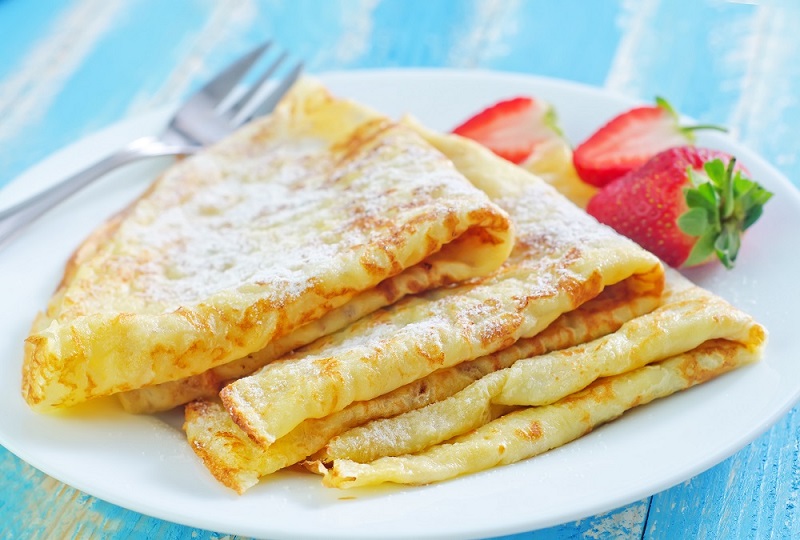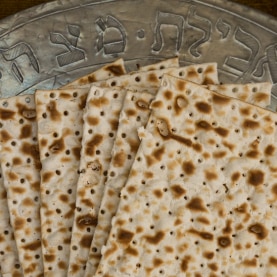Candlemas, a festival of lights
Candlemas is celebrated on 2 February and marks the return of light, a symbol of protection and prosperity. This Christian festival commemorates the presentation of Jesus at the Temple of Jerusalem, referring to him as the light of the people of Israel. On this day, Christians take candles to be blessed in church, while for those with a sweet tooth, this day is also a chance to eat pancakes. Elsewhere in the world, people eat corn-based dishes or watch out for a groundhog emerging from hibernation.
From sacrificing goats to blessing candles
The word Candlemas derives from candela meaning candle, hence Candlemas is also known as the festival of light. It is celebrated on 2 February to honour light warding off evil and death and assuring prosperity. This Christian festival commemorates the presentation of Jesus at the Temple of Jerusalem and his role as a light to enlighten pagan nations.
The first written records of this celebration date back to the 5th century. They narrate the journey Mary and Joseph made to the temple with the Infant Jesus. The Church created this celebration to replace pagan cults that placed light at the heart of their rituals. The Romans in fact held torchlit processions in February to purify the earth at the end of winter. It was also the month of the Lupercalia, a festival of purification held in Rome on 15 February to revive fertility by releasing vital forces.
As part of this festival, young men sacrificed goats then ran through the streets, dressed in animal skins, striking women’s palms with goatskin whips. These lashes were meant to guarantee easy childbirth for pregnant women and fertility for those without children. However, over time, the Lupercalia became conducive to scandalous excess and the Christian community looked upon these practices with a disapproving eye. In the year 494, Pope Gelasius I decided to ban this festival, replacing it with Candlemas processions and the blessing of candles in churches.
From eating pancakes to watching groundhogs
As to the origin of pancakes, Pope Gelasius I is said to have given wafers or flatbread to pilgrims arriving in Rome. However, there are also other stories and superstitions. Round, golden pancakes served in February are evocative of the sun and may have been a symbol of fertility and prosperity. In order to obtain an abundant harvest, a farmer would traditionally flip the first pancake with his right hand while holding a gold coin in his left hand. The gold coin would then be wrapped inside the pancake and kept at the top of a wardrobe until the following year, to then be given to the first poor person encountered.
Other parts of the world observe different culinary and cultural traditions. El Día de la Candelaria is a public holiday in Mexico, when processions and dance groups invade the streets. Families get together and eat tamales, a Mesoamerican dish first eaten more than 5000 years ago. The dough for these ‘parcels’ is generally made from maize flour and steamed in the leaf of a cob of corn or in a banana leaf. The filling may be savoury (meat, ragout, black beans, chillies) or sweet (fruit, cream). Mexicans serve tamales with hot chocolate or atole, a sweet hot drink made from maize flour diluted with water or sometimes milk, and often flavoured with orange blossom, cinnamon, vanilla or cocoa. According to tradition, whoever finds the figurine during the Epiphany celebrations is responsible for preparing the tamales.
The United States and Canada celebrate Groundhog Day on 2 February. On this day, the custom is to try to predict the end of winter by observing a groundhog burrow. If the weather is cloudy and the emerging rodent does not see its shadow, spring will soon arrive. However, if it is sunny and the mammal sees its shadow, it will be frightened and retreat to its den to continue hibernating. It is then said that winter will last another six weeks.
Candlemas honours the end of winter and the return of light, so various proverbs link it to the weather, to the cold or the return of the sun. Here are two examples:
“If Candlemas Day be fair and bright, winter will have another fight.”
“If Candlemas Day brings cloud and rain, winter won’t come again.”
RISSON, Jean-Paul, 2018. Lupercales, Encyclopædia Universalis [online]. 2018. [Accessed on 24.05.2018]. Available on: http://www.universalis-edu.com/encyclopedie/lupercales
CHAIX, Benjamin, 2018. La Chandeleur vient de très loin. Tribune de Genève [online]. 02.02.2018. [Accessed on 23.05.2018]. Available on: http://www.tdg.newsnetz.ch/societe/histoire/chandeleur-vient-tres/story/23439183?track
CROIRE. LA CROIX, 2017. La Chandeleur. [online]. 04.01.2017. [Accessed on 23.05.2018]. Available on: https://croire.la-croix.com/Definitions/Fetes-religieuses/Chandeleur/La-Chandeleur
DUMONT, Pauline, 2014. Comment fête-t-on la Chandeleur à l’étranger ? 20 minutes [online]. 27.01.2014. [Accessed on 13.06.2018]. Available on: https://www.20minutes.fr/magazine/chandeleur/histoire/comment-fete-t-on-la-chandeleur-a-letranger-6249/
GONET, Isabelle, 1987. La Chandeleur. Journal romand [online]. RTS I Radio Télévision Suisse, 06.02.1987. [Accessed on 23.05.2018]. Available on: https://www.rts.ch/archives/tv/information/journal-romand/9299550-la-chandeleur.html
GRENON, Fabien, 2018. La Chandeleur fête la crêpe entre religion et paganisme. 24 Heures [online]. 02.02.2018. [Accessed on 23.05.2018]. Available on: https://www.24heures.ch/vaud-regions/videos-chandeleur-fete-crepe-religion-paganisme/story/16280301
MEREUZE, Didier, 2002. D’où vient la tradition de la Chandeleur ? Croire. La Croix [online]. 02.02.2002. [Accessed on 23.05.2018]. Available on: https://croire.la-croix.com/Definitions/Fetes-religieuses/Chandeleur/D-ou-vient-la-tradition-de-la-Chandeleur
SEVIN, Marc, 2018. À qui Jésus est-il présenté ? Croire. La Croix. [online]. 2018. [Accessed on 23.05.2018]. Available on: https://croire.la-croix.com/Definitions/Fetes-religieuses/Chandeleur/A-qui-Jesus-est-il-presente
ZANZOLA, Nathalie, 2018. Pourquoi mange-t-on des crêpes à la Chandeleur ? France 3 Bourgogne-Franche-Comté [online]. 01.02.2018. [Accessed on 23.05.2018]. Available on: https://france3-regions.francetvinfo.fr/bourgogne-franche-comte/pourquoi-mange-t-on-crepes-chandeleur-1412639.html













